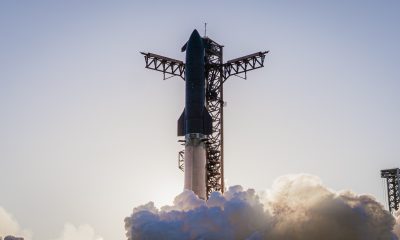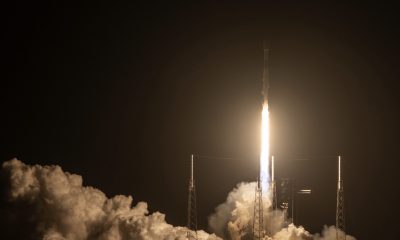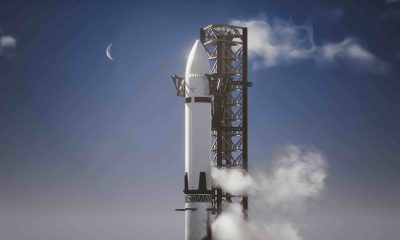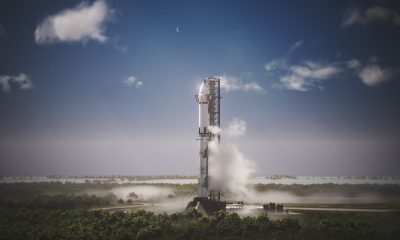

News
Elon Musk says SpaceX could fire up first orbital-class Super Heavy booster next week
Update: In response to this article, SpaceX CEO Elon Musk says that the plan is to not only ‘cryoproof’ the first flightworthy Super Heavy – but to static fire the booster and shake down Starship’s brand new orbital launch complex as early as “next week.”
A lot of work would need to be finished – and all of it smoothly – for an orbital launch pad cryoproof and static fire to be possible just a week or less from now but Musk’s response nevertheless provides invaluable context for SpaceX’s near-term plans and confirms that Super Heavy Booster 4 is ready for integrated testing as-is. Further, Musk’s tweet implies – as speculated – that Starbase’s orbital launch complex tank farm is much closer to test-readiness than it might otherwise appear.
For the second time in five weeks, SpaceX has installed a Super Heavy booster – fitted with 29 Raptor engines – on Starship’s nascent ‘orbital launch mount.’
Both Super Heavy Booster 4 (B4) and the launch mount have undergone substantial changes since they last parted ways four weeks ago. SpaceX teams have been laser-focused on installing the vast array of plumbing, wiring, and components required to turn the hulking steel structures into functional launch facilities and the largest flightworthy rocket and both certainly look the part.
Superheavy Booster 4 pic.twitter.com/jQ7RAN1nCK— SPadre (@SpacePadreIsle) September 8, 2021
Unlike Starship, which has an expansive skirt section perfect for stowing away sensitive plumbing and avionics, Super Heavy has an unusually short interstage and no real skirt, meaning that all the extra hardware SpaceX has installed over the last month or so is impossible to hide. Indeed, when Booster 4 rolled out of Starbase’s high bay for the second time on September 8th, the rocket was blanketed by dozens of new valves, thousands of feet of wiring and plumbing, pressure vessels, multiple hydraulic racks, a ‘quick disconnect’ (QD) umbilical panel for interfacing with the launch pad, places for “flight termination system” (FTS) explosive charges to be installed, and much, much more.
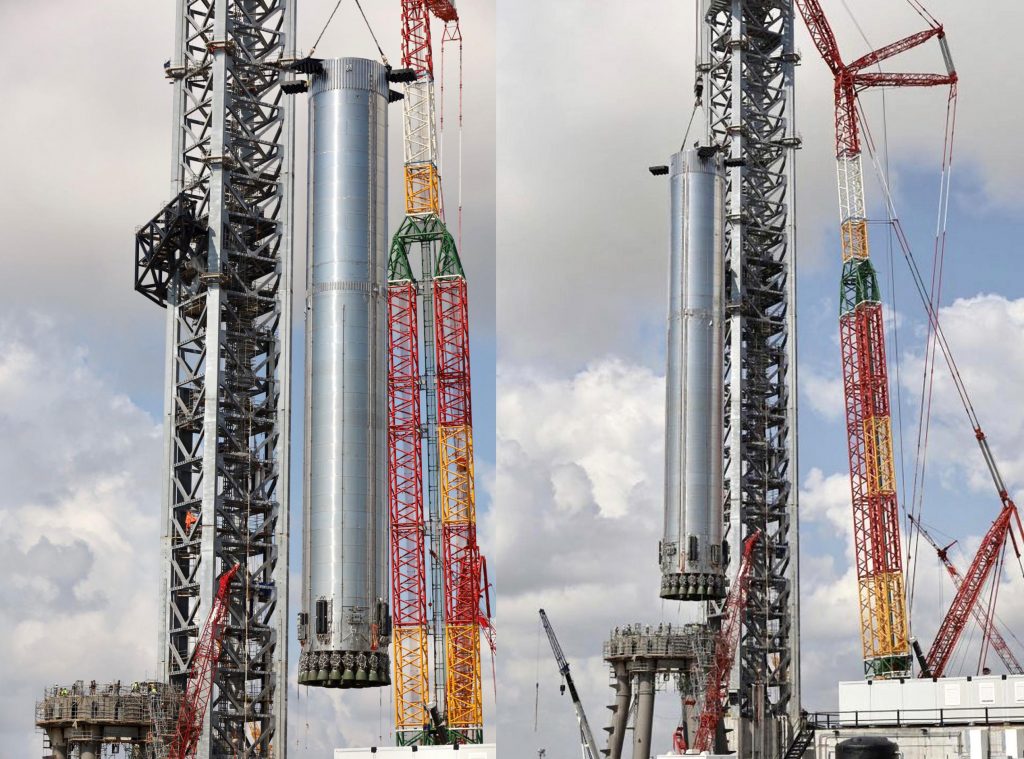
Additionally, Super Heavy B4’s second batch of 29 Raptors – installed in late August – also appear to all have outward-facing umbilical panels that will all the booster to receive some level of assistance from ground systems while igniting those engines. It’s unclear what exactly they’ll do but it’s likely that those engine umbilical will connect to high-pressure gas systems on the ground, presumably minimizing the already absurd amount of COPVs and secondary plumbing present on Super Heavy.
However, Super Heavy will still need to be able to reignite anywhere from 1 to 13 of its 29-32 Raptor engines in flight for boostback and landing burns, potentially explaining the eight large pressure vessels and 100+ small, high-pressure gas lines installed on B4’s aft end. Super Heavy also needs to be able to chill, feed, and purge all 29-32 of its Raptor engines, guaranteeing that Starship’s booster plumbing situation was going to be immensely complex no matter the approach SpaceX took.
In addition to Super Heavy B4’s newfound complexity, SpaceX also spent the last four or so weeks outfitting Starbase’s orbital launch mount’ with all the plumbing, power, avionics, and mechanical systems it will need to function as “Stage Zero” of orbital-class, two-stage Starship rockets. SpaceX has installed most of the secondary quick disconnect structures that will connect to and feed each of Super Heavy’s 20 outer Raptor engines. The main Super Heavy quick disconnect device was also installed and a team has been gradually outfitting and connecting the structure to the plumbing, avionics, and power it will provide boosters.
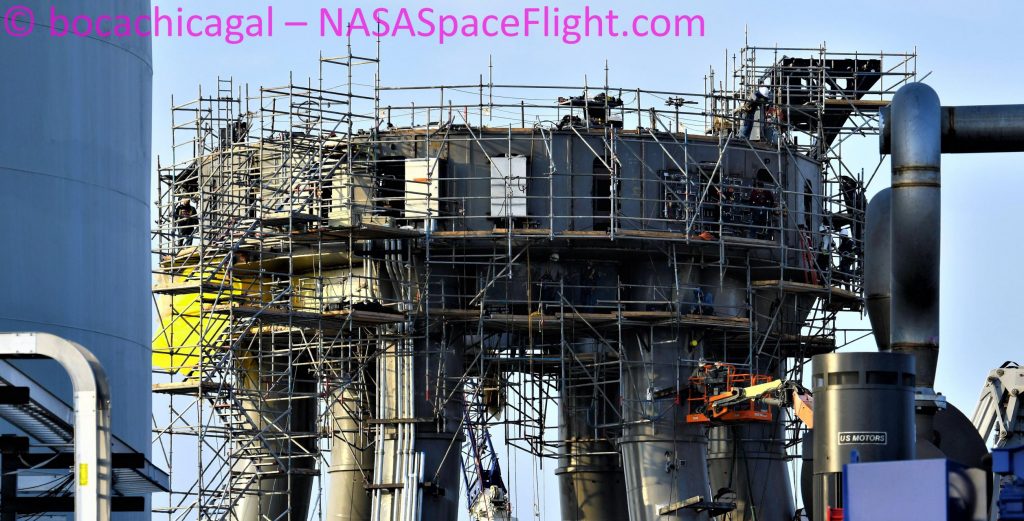
A significant amount of work still remains to connect the orbital launch mount to SpaceX’s incomplete and custom-built orbital tank farm, which will store, supercool, and feed the pad, Super Heavy, and Starship with several thousand metric tons of liquid and gaseous oxygen and methane. It’s difficult to say how close Starbase’s tank farm is to being able to support Starship or Super Heavy testing, which makes it equally unclear what SpaceX’s near-term plans are for Booster 4. It’s possible that the rocket has been reinstalled on the orbital launch mount as a second fit check, perhaps focused on those 20 outer Raptor quick-disconnect mechanisms.
It’s also possible that the tank farm and launch mount plumbing are much closer to completion than expected, meaning that Super Heavy B4 could remain at the orbital pad until it’s completed several crucial cryogenic proof and static fire tests. Of course, short of confirmation from Musk himself, we’ll just have to wait and see.
Elon Musk
Elon Musk just roasted Sam Altman’s Tesla Roadster cancellation
“And you forgot to mention act 4, where this issue was fixed and you received a refund within 24 hours.
But that is in your nature.”

Elon Musk has responded to OpenAI CEO Sam Altman’s decision to cancel his Tesla Roadster reservation, which he revealed on X on Thursday.
We reported on Altman’s decision, which he called “A tale in three acts,” showing his confirmation email from Tesla back in 2018, an email requesting his $50,000 deposit back after canceling his order, and a notification from Google that the email he sent was not delivered.
A tale in three acts: pic.twitter.com/ClRZBgT24g
— Sam Altman (@sama) October 30, 2025
Musk did not take too kindly to the post from his tech rival, first referencing his position with OpenAI, and then confirming that Altman received his reservation deposit back within 24 hours:
And you forgot to mention act 4, where this issue was fixed and you received a refund within 24 hours.
But that is in your nature.
— Elon Musk (@elonmusk) November 1, 2025
OpenAI was started by Musk, Altman, and others back in 2015, and was geared toward being a non-profit company that would develop safe artificial intelligence that would be accessible to people.
However, Musk and Altman did not agree on the future of the company. Musk left, and Altman turned OpenAI into a for-profit company. This led to a variety of lawsuits and some very public spats between the two. Musk has called out Altman for turning the company into a for-profit, which has been his main source of criticism for his former colleague.
The Roadster has been hanging in the balance of Tesla’s manufacturing plans for seven years, but the company has made more indications that it will be unveiled later this year and will have some insane technologies.
Musk said on Friday in an episode of the Joe Rogan Experience Podcast that Tesla is “getting close to demonstrating the prototype.”
He said:
“Whether it’s good or bad, it will be unforgettable. My friend Peter Thiel once reflected that the future was supposed to have flying cars, but we don’t have flying cars. I think if Peter wants a flying car, he should be able to buy one…I think it has a shot at being the most memorable product unveil ever. [It will be unveiled] hopefully before the end of the year. You know, we need to make sure that it works. This is some crazy technology in this car. Let’s just put it this way: if you took all the James Bond cars and combined them, it’s crazier than that.”
Musk hinted that the vehicle could fly and would have “crazy technology” that would put James Bond’s vehicles to shame. It will be interesting to see what Tesla will unveil when the event happens and if it can come through on this mind-blowing teaser.
News
SpaceX successfully launches 100th Starlink mission of 2025
With 100 Starlink missions completed for 2025, space enthusiasts have noted that SpaceX has successfully launched 2,554 Starlink satellites so far this year.
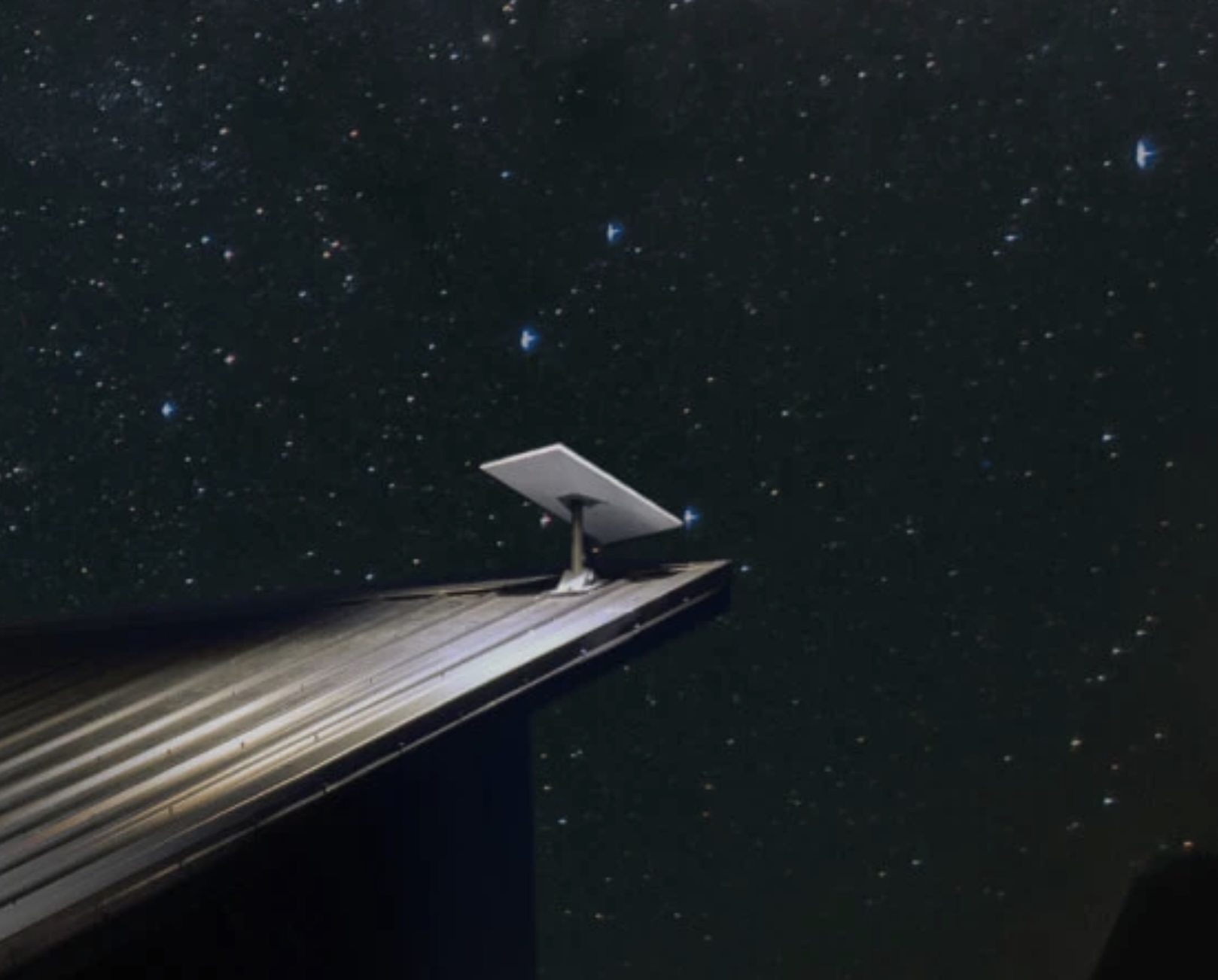
SpaceX achieved its 100th Starlink mission of the year on Friday, October 31, marking another milestone for 2025.
A Falcon 9 rocket carrying 28 Starlink broadband satellites successfully lifted off from Vandenberg Space Force Base in California at 4:41 p.m. ET, carrying another 28 Starlink satellites to Low Earth Orbit (LEO).
Falcon 9 booster’s 29th flight
Roughly 8.5 minutes after liftoff, the Falcon 9’s first stage touched down on the drone ship Of Course I Still Love You in the Pacific Ocean. This marked the booster’s 29th flight, which is approaching SpaceX’s reuse record of 31 missions.
This latest mission adds to SpaceX’s impressive 138 Falcon 9 launches in 2025, 99 of which were dedicated to Starlink, according to Space.com. The company’s focus on reusing boosters has enabled this breakneck pace, with multiple launches each week supporting both Starlink’s expansion and external customers.
Starlink’s network continues massive global expansion
Starlink remains the largest active satellite constellation in history, with more than 10,000 satellites launched, nearly 8,800 of which are currently active. SpaceX recently achieved Starlink’s 10,000-satellite milestone. With 100 Starlink missions completed for 2025, space enthusiasts have noted that SpaceX has successfully launched 2,554 Starlink satellites so far this year.
Starlink, which provides high-speed, low-latency internet connectivity even to the world’s most remote areas, has been proven to be life-changing technology for people across the globe. The service is currently operational in about 150 countries, and it currently has over 5 million subscribers worldwide. From this number, 2.7 million joined over the past year.
News
Tesla shares updated timeframe for Cybertruck FSD V14 release
The Cybertruck was expected to receive FSD V14 before the end of the month, but Tesla was not able to meet the target.
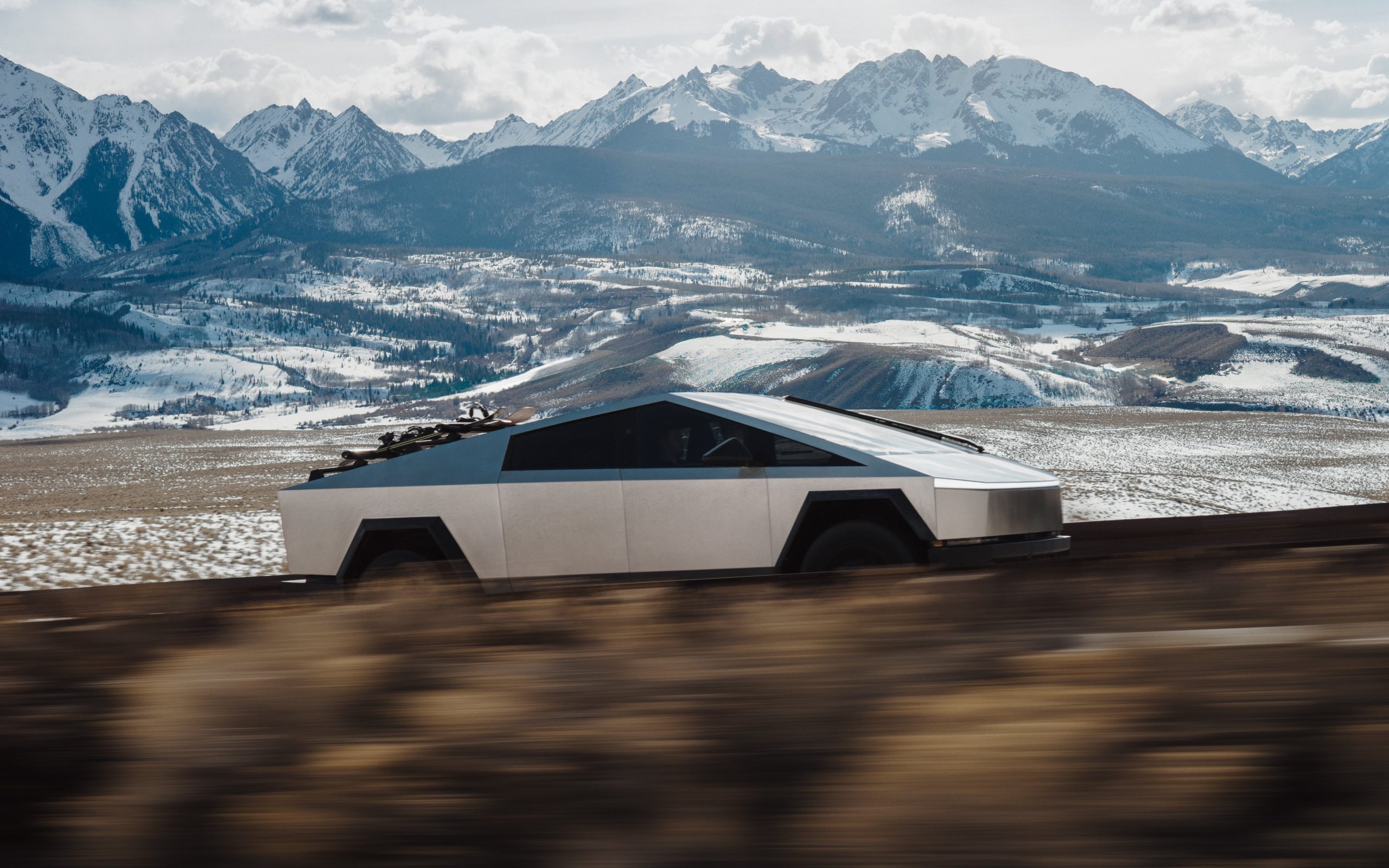
Tesla’s Full Self-Driving (FSD) V14 update for the Cybertruck could arrive this weekend, as per recent comments from Director of Autopilot Software and VP of AI Ashok Elluswamy.
The Cybertruck was expected to receive FSD V14 before the end of the month, but Tesla was not able to meet the target.
Cybertruck FSD V14
Considering the extended wait for FSD V14, it was no surprise that several Cybertruck owners were asking for updates about the system’s rollout to the all-electric pickup truck on Friday. These included the official Cybertruck X account, which responded to Elluswamy’s end of month estimate with “I only see trick. Where is my treat.”
This prompted a response from the AI executive, who replied with, “Sorry, pushing for early access Cyber release over the weekend.” This means that if all goes well, Cybertruck owners would be able to experience FSD V14 very soon. Some, however, are wondering if Tesla would go straight to V14.2 for the Cybertruck’s FSD V14 update, or if the vehicle will receive V14.1 first.
Tesla pushes to unify FSD experience across its lineup
The upcoming Cybertruck rollout represents the next step in Tesla’s efforts to roll out FSD capabilities across all of its vehicles. FSD V14 is a notable step forward for the company’s AI-driven self driving system, with features like Mad Max mode getting positive reviews from longtime Full Self Driving testers.
For the Cybertruck, the FSD V14 update would mark one of its first major over-the-air upgrades for the vehicle. Likely due to its size, the Cybertruck tends to receive FSD updates later than the S3XY lineup, which is quite surprising considering that the all-electric pickup truck is a premium-priced vehicle that is home to some of Tesla’s most advanced technologies.
-
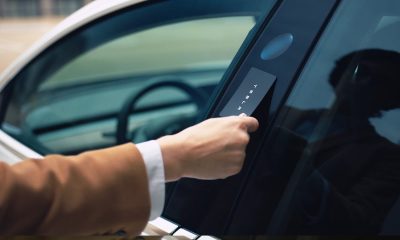
 News2 weeks ago
News2 weeks agoTesla might be doing away with a long-included feature with its vehicles
-
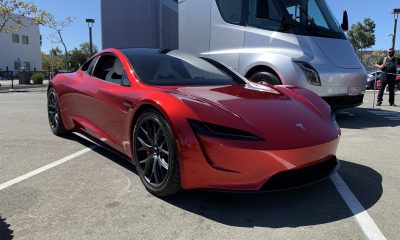
 News2 weeks ago
News2 weeks agoTesla updates fans on its plans for the Roadster
-

 Elon Musk2 weeks ago
Elon Musk2 weeks agoElon Musk: Grok 5 now has a 10% chance of becoming world’s first AGI
-

 News2 weeks ago
News2 weeks agoTesla is ramping up its hiring for the Cybercab production team
-

 News2 weeks ago
News2 weeks agoTesla rolled out a new feature with FSD v14 to fix a major complaint
-
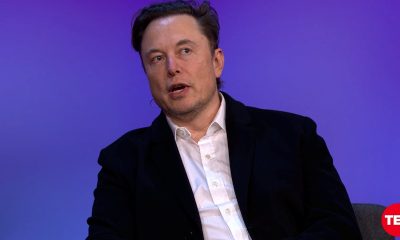
 Elon Musk2 weeks ago
Elon Musk2 weeks agoElon Musk hits back at former Tesla employee who disagrees with pay package
-
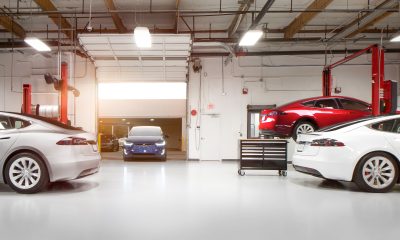
 News2 weeks ago
News2 weeks agoTesla just made Service even easier and more convenient
-

 News2 weeks ago
News2 weeks agoTesla Model Y L becomes China’s 4th best-selling mid-to-large SUV in its first month of sales




